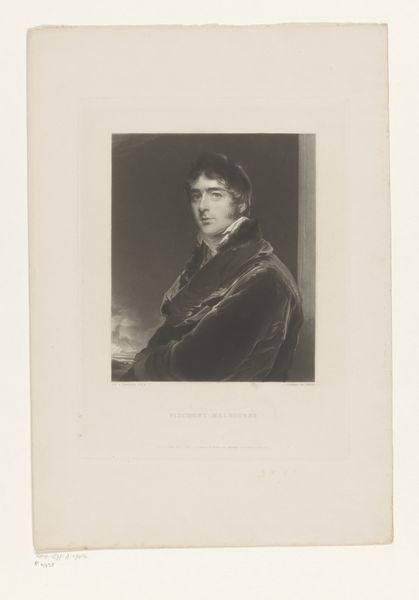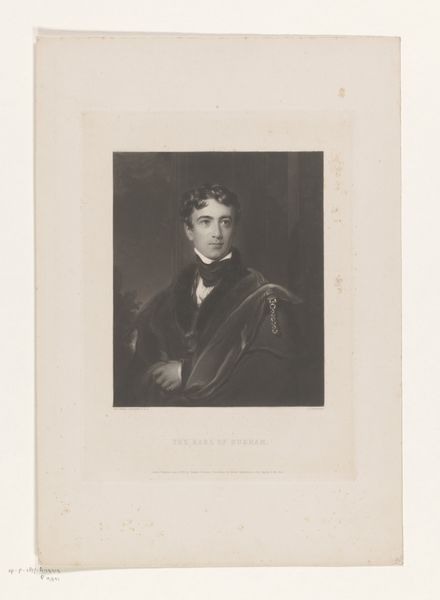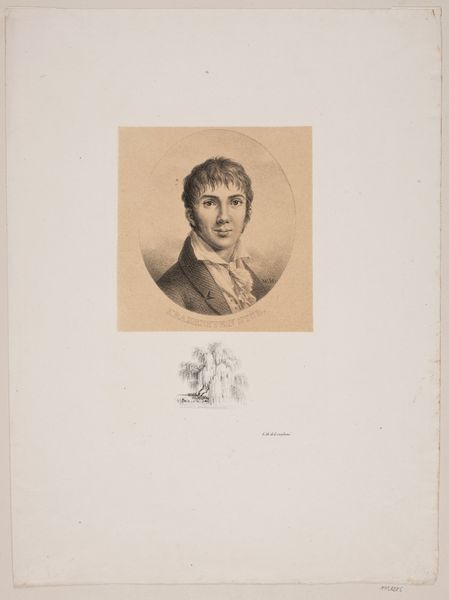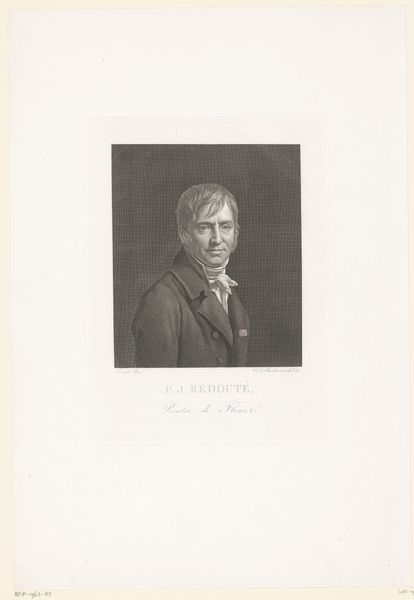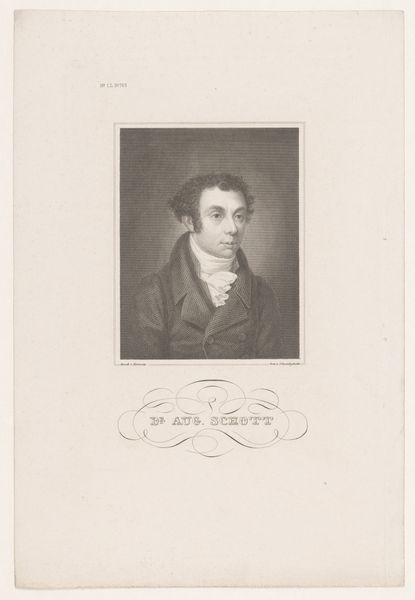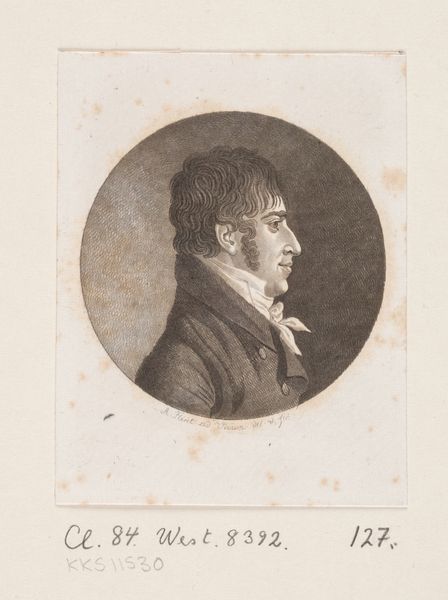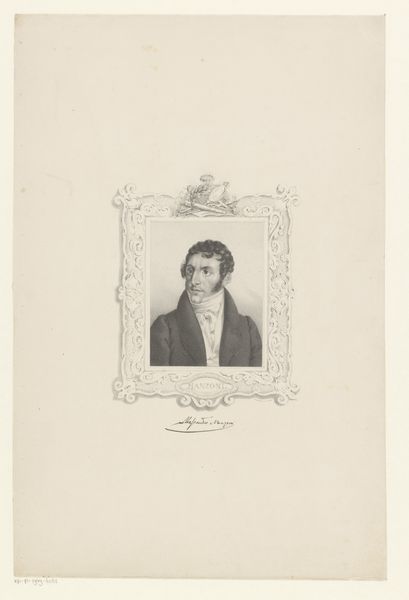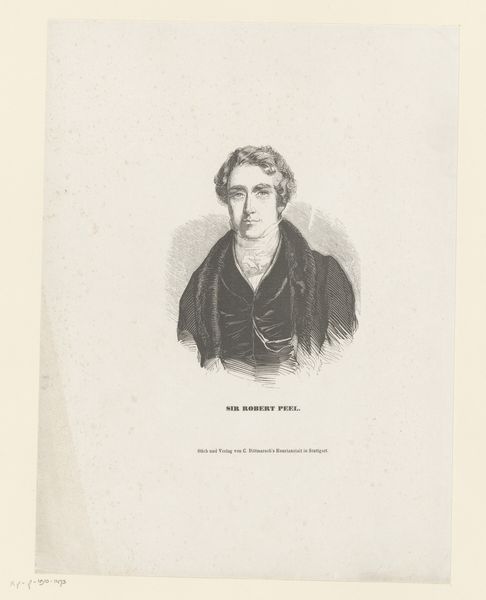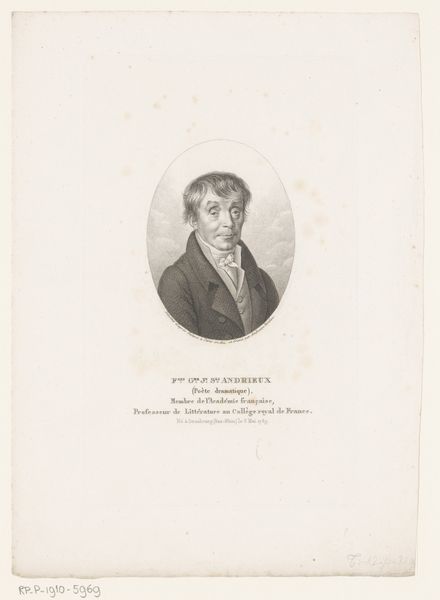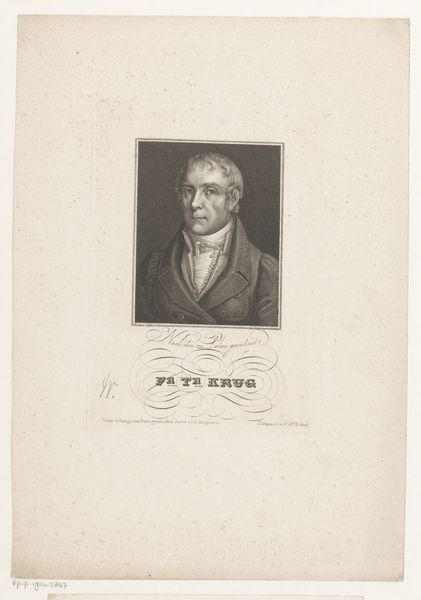
#
portrait
#
print photography
# print
#
figuration
#
romanticism
#
realism
Dimensions: height 308 mm, width 228 mm
Copyright: Rijks Museum: Open Domain
Curator: This is Edward McInnes's "Portrait of John Philpot Curran," made in 1842, using print as the medium. Editor: The subject's gaze is quite intense; he’s looking upwards with a sense of longing or perhaps… defiance? The monochrome palette definitely enhances the dramatic feel. Curator: This image encapsulates much about the early 19th-century reception of Curran, a prominent Irish lawyer and politician. He was a complex figure, viewed both as a brilliant orator and a controversial political player due to his advocacy for Irish rights and his involvement in several high-profile trials. Editor: So, this portrait wasn’t just about capturing his likeness. Was it attempting to shape or control how he was perceived? The soft, almost smoky background makes him stand out but it also almost feels as though Curran is emerging from a storm of his own creation, or one inflicted on him by societal powers. Curator: Precisely! Consider the historical context. The Act of Union, which formally joined Ireland and Great Britain, had passed a few decades earlier. There were growing tensions, a burgeoning sense of Irish nationalism brewing below the surface. Placing Curran, who staunchly defended figures challenging British rule, in a light reminiscent of Romantic heroes gives an air of legitimacy and righteousness. Editor: It’s fascinating how printmaking served as a democratizing tool, making images like this accessible to a wide audience. Did his politics align with his wealthy or elite status, or did it defy his placement in society? I guess, how ‘radical’ could his politics even be? Curator: Although he achieved social success in Ireland and London, he often advocated for marginalized communities in the courtroom, making this stance indeed subversive. Moreover, visual imagery solidified ideas about nationalism and leadership, shaping public sentiment in pivotal times. Editor: Thanks for adding so much dimension to my viewing experience. Now, knowing that he may be viewed with some degree of defiance or fighting an uphill battle makes me rethink the power of this image! Curator: I think viewing it with this historical backdrop allows us to think about the continued presence and absence of images, which shapes a cultural memory that is still impacting perceptions and conversations in Ireland and Britain to this day.
Comments
No comments
Be the first to comment and join the conversation on the ultimate creative platform.
